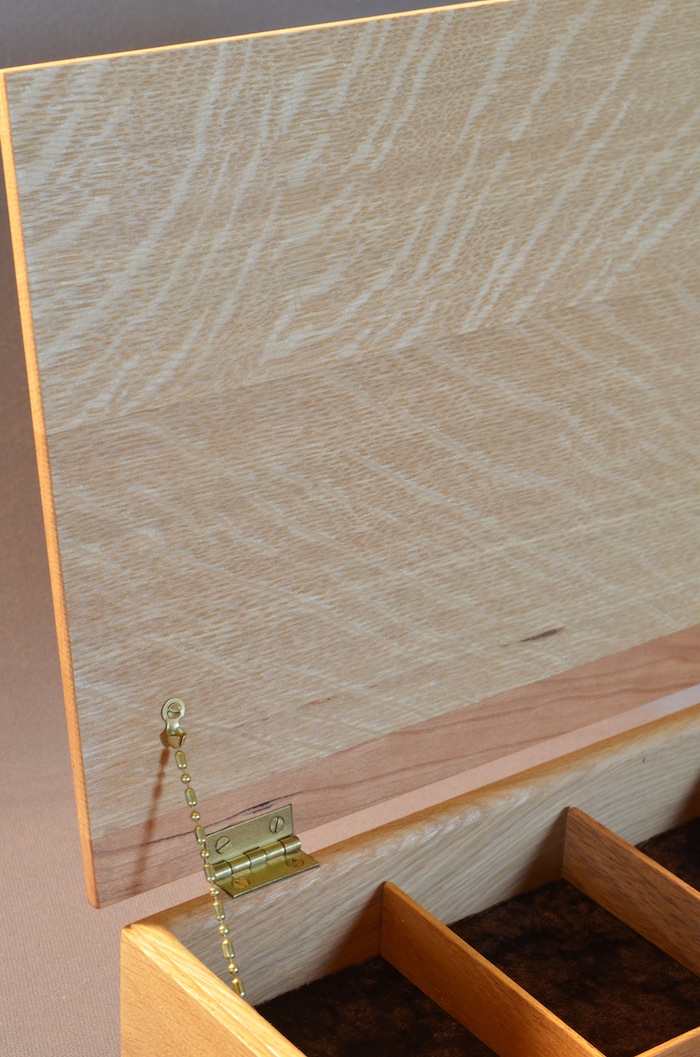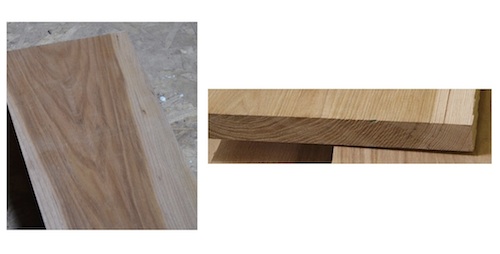Learning about wood can be confusing. Not only do different species have different characteristics, but boards cut from the same tree can also vary greatly. One of the factors effecting the final board is how the log is cut by the sawyer.

Photos via wooden-box-maker.com
Flat-sawn lumber
When logs arrive at the saw mill, the sawyer has several ways to cut the wood into boards. The most common method is to simply cut the log down its length tangentially to the grain.

This method produces flat-sawn (also called plain-sawn) lumber. This is the most common type of cut. Unless boards are marked otherwise, they are usually flat sawn. This type of cut results in boards with the familiar “cathedral” grain pattern on the face as in the example below showing both face grain and end grain.

Cutting for grade and flitch cutting
A flat-sawn log can be cut in several ways. Sometimes the sawyer will roll the log after each cut to find the
best face. This is called cutting for grade and produces the nicest boards, but can produce more waste.
Other times, the log is cut in continuous layers, called flitches, in what is, not surprisingly, called a flitch cut. This is often done when the wood has a particularly nice grain pattern, so that each board repeats the same pattern. It is also a popular way to cut veneer and is great for book matching (laying matching grain patterns side by side to repeat and mirror the grain). The box top below is made from book-matched, flat-sawn walnut.

Quarter-sawn lumber
Another method of turning a log into boards is to quarter the log, then cut each quarter at roughly 90 degrees to the growth rings. This is quarter-sawn lumber. It is more stable than flat sawn wood and often has lovely grain, such as in the oak below. It is popular for projects that need the extra wood stability (see article on wood movement for more information).

Rift-sawn lumber
Rift-sawn wood is cut so that the boards are at a 30-60-degree angle to the growth rings. This produces narrow boards and there is a lot of waste between cuts. Sawyers are less likely to make this sort of cut. However, the resulting wood has straight consistent grain, like the edge grain in a flat-cut board. I don’t have photos of rift sawn wood because I prefer more interesting grain, but the straight grain is good when you want to limit wood movement.
The drawing below shows how different boards might be cut from a log, with an example of flitch-cut, quarter- sawn and rift-sawn logs.

Take a look at the boards around you the next time you are at the lumber yard and remember you can choose your
lumber for looks and stability based on how the log was cut.

Share tips, start a discussion or ask one of our experts or other students a question.
No Responses to “Wood Confusion: Flat-, Rift- and Quarter-Sawn Lumber”